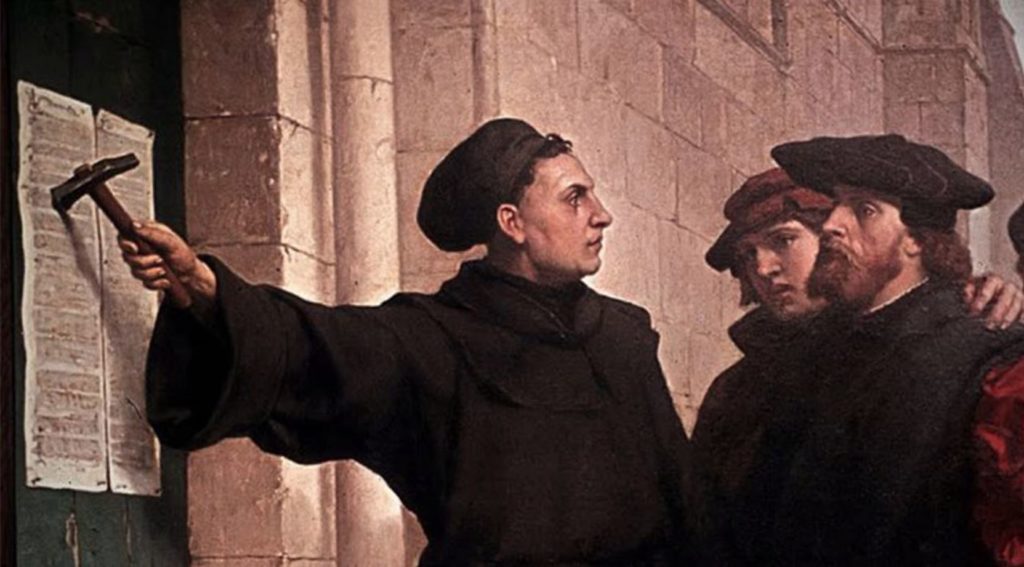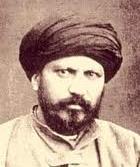
In order to gain a critical understanding of the persistence of Islamic archaism and all its paraphernalia, one must approach it through the logic of its own history, as well as that of the Arabo-Muslim publics of the 19th and 20th centuries.
THIS IS RADICALLY different from the process of European history and from the residual folkloric Christianity of the present-day West. Let me explain: some orientalists, such as the American Richard Michel, see in the activist Islamic movements a potential for reforming Islam. In other words, a way of rationalising it, thus bringing it closer to western liberalism. Such writers have clearly succumbed to the comic temptation of analogy and to the lazy facility of repetition. For, if one sets up a parallel between the contemporary Islamic Brotherhoods and the European Reformation, one is just making a mockery of concrete history.
Seen historically, the Reformation is an integral part of the making of the modern world, of the birth of nations and their languages from the ruins of the Holy Roman Empire and its celestial counterpart – the Church. This process led, through a long route of development, to the explosion of the third estate – a fact of decisive importance, without parallel in the modern history of Islam – an explosion which brought forth the French Revolution and hence modern nations and classes. The Islamic movements are located in a completely different historical context. To conflate this context with that of the Reformation is to misunderstand the origins and development of the current movement of Islamic integralism, as well as its historical antecedent – the pan-Islamic movement of the 19th century.
Believers in pan-Islamism did not realise that times had changed
Pan-Islamism took form under the political direction of the Ottoman sultan himself and the ideological direction of al-Afghani and ‘Abduh. Its aim was to defend the caliphate (the empire) which was slowly but surely breaking up as a result of the combined thrusts of European economic and ideological penetration, and of the nationalist demands of the Balkan peoples, especially the Serbs and the Bulgars who were struggling for emancipation both from the domination of the Ottoman rulers and from the religious domination of the ecumenical patriarchate who still hankered after the idea of a grand new empire with Greece at its centre. Blinded by their pro-Ottoman prejudices, the believers in pan-Islamism did not realise that times had changed and that the era of modern nation-states had succeeded that of the empires of former times. True to itself, pan-Islamism was keenly opposed to the secular and liberal anti-Ottoman tendency of the Arab Christians – Shibli Shumayyil, the Darwinist, was one of their leading spokesmen – during the last quarter of the 19th century. This latter tendency considered the only answer to European penetration and Ottoman despotism to be the complete adoption of the European model of civilisation as well as the separation of the Arab provinces from the empire and hence the formation of a modern nation.
Pan-Islamism countered these liberal demands with its famous old rubbish about the need for a just despot modelled on the second caliph, ‘Umar, who would impose on his subjects a bovine discipline for fifteen years before guiding them step by step to the age of reason. To the idea of the formation of a secular Arab nation comprising Muslims, Christians and Jews, pan-Islamism replied with the Muslim nation in the Qur’ānic meaning of the term – that is a community of believers. They even thought that they could stop the Arabo-Muslim provinces of the empire from breaking away by unifying Sunni Islam through the merging of its four rites.

Suggested Reading
This response to the challenge of European modernism was not only anachronistic – it was also uncertain. The leading spokesman of pan-Islamism, al-Afghani, vacillated from one position to another. This high priest of pan-Islamism sometimes opted for pan-Arabism which implied the break up of the empire; a staunch pro-Ottoman, he at times advocated the Arabisation of the empire, which would mean that the Turks, the dominant element in the empire, would be in an inferior position; a militant opponent of socialism, as a theory imported from Europe, he at times predicted the universal victory of socialism; an ideologist of Islamic fundamentalism, he at times (probably under the influence of Free-Masonry, of which he was a member) advocated the merging of the three monotheistic religions in a new synthesis which would be superior to each of them. This idea was openly heretical. His disciple ‘Abduh, after having taken part in the ‘Urabi uprising (1881 – an anti-British and anti-authoritarian revolt, violently condemned by the sultan) later recanted. This confusion and incoherence of pan-Islamism are closely linked to the decline of the Arab-Muslim world since the second half of the thirteenth century, and to its having been conquered, for the first time in its history, by Europe.
In the last analysis the followers of pan-Islamism reflected the feelings of the big pro-Ottoman land-owners. These landowners owed their position to the first attempt at privatisation of the crown domanial estates, which was carried out in the semi-modern, semi-oriental state of Muhammad ‘Ali. They were aware of the threat which European influence presented to their interests. Besides, British domination was to encourage, at their expense, the growth of a new rural class based on small and medium land-owners. It is this very class which constituted the core of the modern Arab bourgeoisie.
The pan-Islamism of the 19th century, known as al-Nahḍa (Awakening), is in no way comparable to the Reformation and still less to the Renaissance, which was a return to the pre-Christian values of pagan Graeco-Roman civilisation. Even the Counter-Reformation was a progressive movement in comparison with contemporary Muslim integralism. The latter began in 1928, that is after the first world war, which marks the beginning of the decline of the capitalist mode of production, whose crisis since then has been permanent. Henceforth all variants of the bourgeoisie are regressive. Besides, one cannot, without making a fool of oneself, identify the path of the history of the Arabo-Islamic world with that of modern Europe. The dynamics are quite different.
Main picture: Martin Luther posting his 95 Theses to the door of the church in Wittenberg in 1517: the start of the Reformation. Oil painting by Ferdinand Pauwels, c. 1872.


